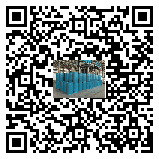Water-Based Silver Powder Dispersants: The "Invisible Magician" That Unlocks a Metallic Luster
Water-based silver powder paints are highly sought after for their environmentally friendly properties and metallic
finish in applications such as automotive coatings, 3C electronic product casings, and high-end toys. However,
achieving uniform dispersion and regular arrangement of silver powder requires an "invisible magician"—a
water-based silver powder dispersant. This article will unveil the secrets of this special additive and explain how it
ensures the silver powder's "obedient" alignment, creating a mirror-like metallic luster.
I. Silver Powder's "Rebellious Period": Why Does It Agglomerate?
Silver powder is essentially micron-sized aluminum flakes with extremely high surface energy. In water, they are easily
attracted to each other by van der Waals forces, forming aggregates. This agglomeration can cause "blooming" and
"floating" in the coating, dulling the metallic luster, and even causing cracking due to silver powder accumulation.
Traditional solvent-based coatings can control silver powder alignment by adjusting the solvent's evaporation rate.
However, water-based systems, due to the strong polarity and slow evaporation of water, significantly increase the
difficulty of silver powder orientation technology.
II. The "Triple Magic" of Dispersants: From Agglomeration to Alignment
Water-based silver powder dispersants achieve the "taming" process of silver powder through physical and chemical
interactions. Their core mechanism can be summarized in three steps:
Wetting and Encapsulation
Dispersant molecules have a hydrophilic group (such as a polyether chain) on one end and a hydrophobic group
(such as a long-chain alkyl group) on the other. When added to an aqueous system, the hydrophobic end adsorbs
to the silver powder surface, while the hydrophilic end extends outward, forming a "protective shell." This process
reduces the surface energy of the silver powders and prevents mutual attraction. For example, certain nonionic
dispersants can form a monolayer coating on the silver powder surface through intermolecular forces, increasing
the spacing between silver particles from nanometers to micrometers.
Steric Hindrance
The coated silver powder surface forms a "solvation layer." When two silver particles come close together, this
hydration layer creates a repulsive force, preventing agglomeration. Experiments have shown that using specific
dispersants, the synergistic electrostatic repulsion between silver powder particles and steric hindrance can reduce
system viscosity by 40% while increasing silver powder loading by 15%. Directional Aids
During the spraying process, dispersants and thickeners work synergistically to control the rheological properties
of the coating. For example, a polyurethane associative thickener provides high viscosity at low shear rates, allowing
the silver powder to quickly fixate during the initial drying phase of the coating. However, under high shear forces
(such as during spraying), the viscosity decreases, ensuring smooth silver powder flow. This "thixotropy" allows the
silver powder to maintain its orientation while preventing sagging defects.
III. Dispersant Selection Guide: Adapting to Different Needs
Based on the silver powder type and coating system, the following principles should be followed when selecting a
dispersant:
Silver Powder Particle Size Matching
Fine silver powder (particle size <10μm) requires a highly dispersible additive to prevent agglomeration due to its large
specific surface area. Coarse silver powder (particle size >20μm) requires a balance between dispersion and
sedimentation stability. For example, a phosphate-based dispersant binds to the silver powder's surface oxide layer
through anchoring groups, stabilizing the particle size distribution and improving coating gloss by 20%.
Coating System Compatibility
Water-based UV systems: Select a dispersant with low photoinitiator interference to avoid affecting curing speed.
Water-based 2K-PU systems: The dispersant must be compatible with the isocyanate component to prevent side
reactions.
A certain nonionic dispersant can be adapted to both of these systems by adjusting its molecular weight, achieving an
industry-leading silver powder alignment dynamic index (measured by a multi-angle colorimeter).
Application Process Compatibility
High-speed spraying requires a low-foaming dispersant to prevent bubbles from affecting coating smoothness.
Electrostatic spraying requires a dispersant that improves the silver powder's charge and enhances adsorption efficiency.
Experimental data shows that optimized dispersants can increase silver powder utilization from 75% to 92%, reducing
material waste.
IV. Application Practice: Key Controls from the Laboratory to the Production Line
Pre-dispersion Process
Silver powder and dispersant are added to a mixture of deionized water and a cosolvent (such as ethylene glycol butyl
ether) at a ratio of 1:0.05-0.2. Stirring is performed at a low speed of 300-800 rpm for 15 minutes to prevent high shear
forces from damaging the silver powder coating. Using this process, one company reduced the silver powder dilution
time from 2 hours to 20 minutes.
pH Control
The pH of the aqueous system must be controlled between 7.5 and 9.0 to maintain dispersant molecular ionization
equilibrium. If the pH is too low, the dispersant may precipitate; if it is too high, it may cause silver powder oxidation.
Using a multifunctional pH adjuster allows for precise control, increasing system stability by threefold.
Thickener Synergy
Adding 0.5%-2% of a pseudoplastic thickener to the coating formulation can produce a shear-thinning rheological
profile. For example, a certain polyurethane thickener reduces its viscosity to below 1000 mPa·s during spraying,
ensuring smooth application; after drying, its viscosity rises back to over 50,000 mPa·s, securing the silver powder
alignment.
V. Future Trends: Green and Intelligent Upgrades
With increasingly stringent environmental regulations, water-based silver powder dispersants are developing in two
major directions:
Biological-based dispersants: Replacing petroleum-based raw materials with plant oil derivatives to reduce VOC
emissions.
Smart-responsive dispersants: Dynamically control silver powder alignment by triggering molecular conformational
changes via temperature or pH. For example, a research team developed a temperature-sensitive dispersant that
automatically adjusts the spacing between silver powders during the drying process, ensuring more uniform coating
gloss across angles.
From microscopic coatings to macroscopic alignment, water-based silver powder dispersants achieve molecular-level
precision control, revitalizing metallic luster in environmentally friendly coatings. With advances in materials science,
this "invisible magician" will continue to propel the coatings industry towards high-performance and sustainable
development.


